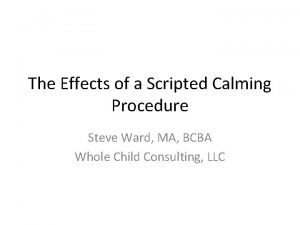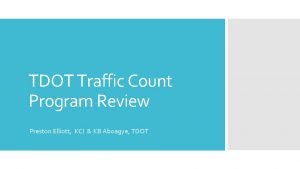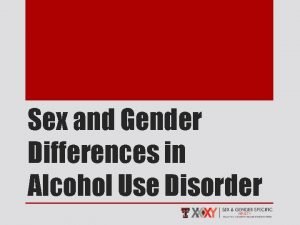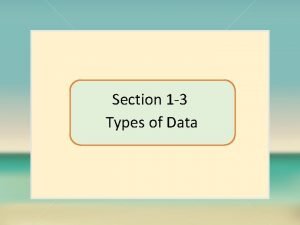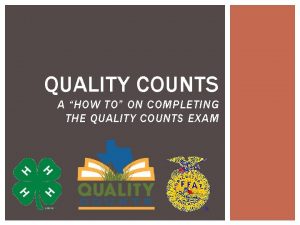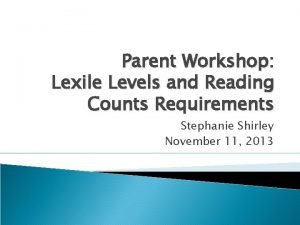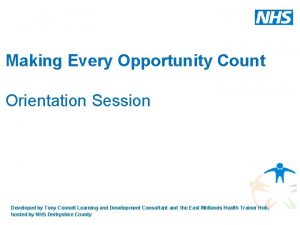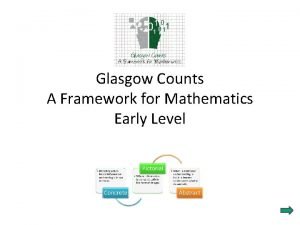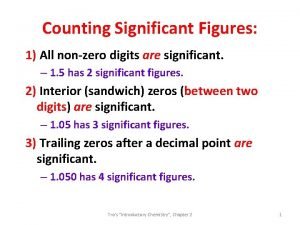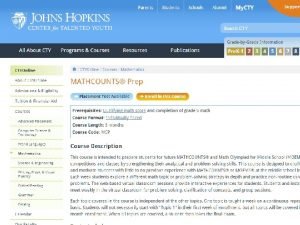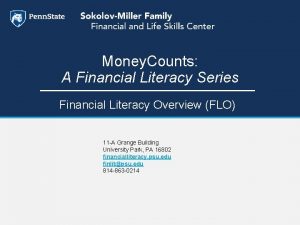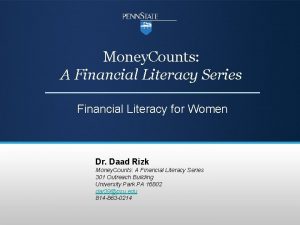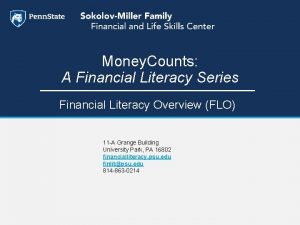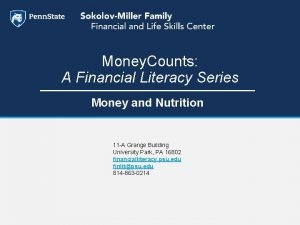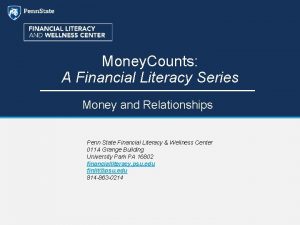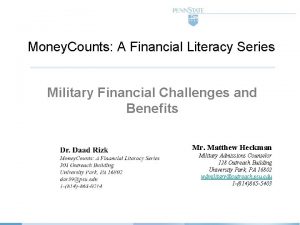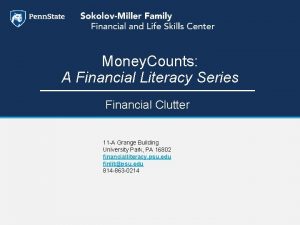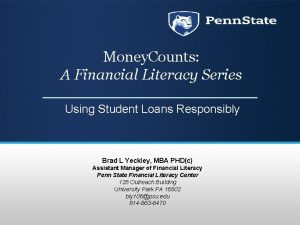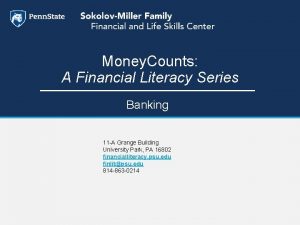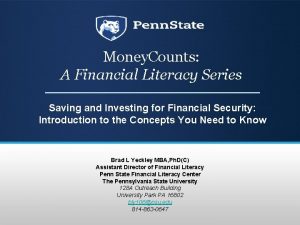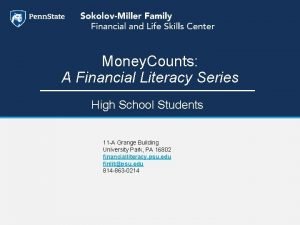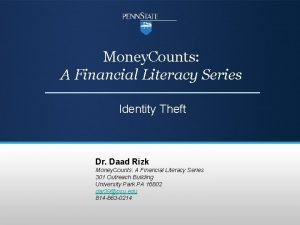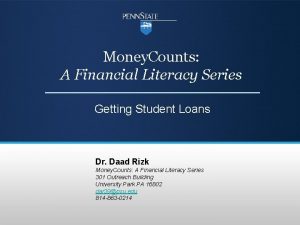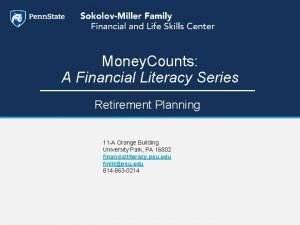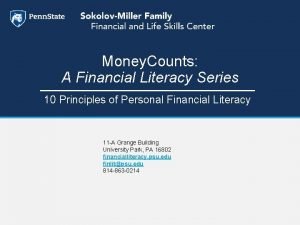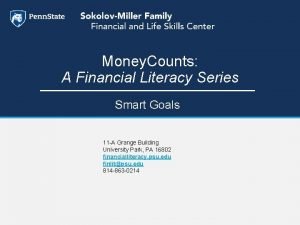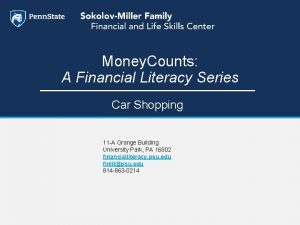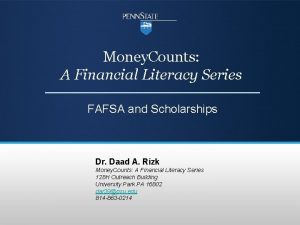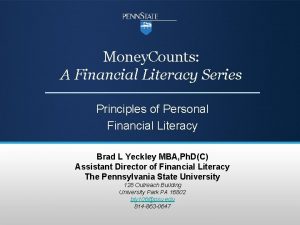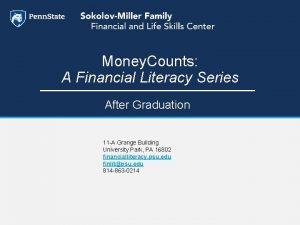Money Counts A Financial Literacy Series Financial Literacy
































- Slides: 32

Money. Counts: A Financial Literacy Series Financial Literacy for Women Dr. Daad Adel Rizk Director, Penn State Financial Literacy Center 128 A Outreach Building University Park PA 16802 https: //financialliteracy. psu. edu/ dar 39@psu. edu 814 -863 -0214

Learning Objectives • • • Define financial literacy for women Financial challenges for women Effective budgeting strategies Debt management principles Vehicles for saving and investing Money. Counts: A Financial Literacy Series

Money and ME • What does money mean to you? – In one word, define your relationship with money? Example: Freedom, Security, Toxic, Drama, Struggle, Problem, Power, Misery, etc. , Money. Counts: A Financial Literacy Series

Four Elements of Financial Well Being • In summary, financial well-being can be defined as a state of being wherein a person can fully meet current and ongoing financial obligations, can feel secure in their financial future, and is able to make choices that allow enjoyment of life. The four elements of financial well being (cfpb) Security Freedom of Choice Present Future Control over day-to-day Month to month finances Financial freedom to make Choices to enjoy life Capacity to absorb financial shock On track to meet financial goals Consumer Financial Protection Bureau (Jan 2015) Money. Counts: A Financial Literacy Series

Women in the United States • • Total population in the U. S. = 325 million (men, women, children) Women in the U. S. = 166 million (51% of total population) Women in the workforce = 75 million (45% of total women) Women not in the workforce = 91 million (55% of total women) • 26% of women in the U. S. do not work (ages 25– 54) – No income – No savings – No retirement plan Source: U. S. Bureau of Labor Statistics (BLS), Current Population Survey (CPS)/ Graph by the Women’s Bureau, U. S. Department of Labor Money. Counts: A Financial Literacy Series

U. S. National Debt Clock • http: //www. usdebtclock. org/ – 42 million living in poverty (for every 7 -8) – 42 million receiving food stamps – 31 million without insurance (for every 9) – 873 thousands bankruptcies – 514 thousand foreclosures Money. Counts: A Financial Literacy Series

26% Single with Children Money. Counts: A Financial Literacy Series

Employment of Women Money. Counts: A Financial Literacy Series

“Pink Collar” Jobs Women as a percentage of total employed in selected occupations, 1985– 2012 annual averages Money. Counts: A Financial Literacy Series

Weekly earning by women Money. Counts: A Financial Literacy Series

Distribution in labor force Money. Counts: A Financial Literacy Series

College Graduates and Debt Money. Counts: A Financial Literacy Series

Student Loans • Total U. S. student loans: $1. 4 (T) – Average loan for college graduate = $27, 000 – Women college graduates are carrying 60% of student debts • Average loan monthly payment is between 8– 20% of women’s net income » U. S. Debt Clock. org Money. Counts: A Financial Literacy Series

Credit Card Debt • Total U. S. credit card debt = $867, 784, (B) • Average credit card debt = $5, 600 – FINRA (Financial Industry Regulatory Authority, Inc. ) 2009 study of 28, 000 people: – – Carrying a credit card balance: 55% of men, 60% of women Making only minimum payment: 38% of men, 42% of women Paying a late fee: 23% of men, 29% of women Over-the-limit fee: 15% of men, 16% of women Money. Counts: A Financial Literacy Series

Moms as Breadwinners • 10 million Mother as the Sole or Primary Provider: 1960– 2011 Money. Counts: A Financial Literacy Series

The Lost Years • Women spend, on average, 13 years out of work – Maternity and family reasons – Care of elderly – Effect on retirement – Effect on Social Security – Effect on savings and investing Money. Counts: A Financial Literacy Series

Social Security Is Neutral with Respect to Gender • Women represent 56% of all Social Security beneficiaries age 62 and older, and approximately 68% of beneficiaries age 85 and older. • In 2011, 48% of all elderly unmarried females receiving Social Security benefits relied on Social Security for 90% or more of their income. • In 2011, the median earnings of working-age women who worked full-time, year-round, were $36, 500, compared to $48, 000 for men. Can we do better? Money. Counts: A Financial Literacy Series

Ladies Last! 5– 7 Years Average Gap Money. Counts: A Financial Literacy Series

“Bag Lady Syndrome” Money. Counts: A Financial Literacy Series

Financial Literacy for Women Financial literacy is a serious issue facing women in the United States (and globally) Women earn less over a lifetime Women spend more than 11– 13 years out of work Women save and invest little, if any Women acquire same or higher debts Women end up divorced (50%) Women live longer (5– 7 years) Women end up with little if any “nest egg” Women fear “bag lady” syndrome Money. Counts: A Financial Literacy Series

Top Financial Missteps Women Take • • Let husband or partner manage the money without their involvement Sign income tax return without understanding or reading it Not taking into account women’s greater longevity Not asking enough financial questions Not sharing care of children and elderly with their partners Not having their own savings, checking, debit and credit cards Not preparing for long-term financial decisions In divorce, women tend to keep the mortgage instead of pension or retirement income • In divorce, women tend to fail to identify debts, credit cards • Fail to protect against future assets, change of will, beneficiaries Money. Counts: A Financial Literacy Series

What women are saying? • https: //www. youtube. com/watch? v=DDwg. Yv. Z 4 q. Qw Money. Counts: A Financial Literacy Series

Education and Empowerment! • Educate yourself about money management and investing – Do not rely on someone else for your financial security • Husband, boyfriend, father • Get more education/training Financial Literacy – Aim for self-improvement at work – Keep moving ahead in your career – Break the traditional feminine career track Money. Counts: A Financial Literacy Series

Set Financial Goals • Set SMART goals – it’s key to financial success – S = Specific – M = Measurable – A = Attainable – R = Realistic – T = Timely Money. Counts: A Financial Literacy Series

Budget as % of net income Money. Counts: A Financial Literacy Series

Eliminate Debts • Strategies to eliminate debts – Credit card debts – Student loans – Car loans – Other loans • Interest rate, total cost of loans (terms) • Know your rules (10% monthly payment) Money. Counts: A Financial Literacy Series

Saving • Emergency Fund –? How many months? • Saving for a specific goal –Vacation –Car –Furniture, etc. , Money. Counts: A Financial Literacy Series

Investing • Investment vehicles: –Retirement account (401 K) –Additional retirement accounts (403, 427, IRA, Roth IRA, etc. , ) –Accumulation of assets – real estate –Stocks, Bonds, Mutual Funds, Futures, Commodities, etc. , Money. Counts: A Financial Literacy Series

Put Your Name on It! • Don't let the fear of losing money, fear of failure, or fear of the unknown stop you from investing – Buy your own home – Buy your own car – Have an emergency savings account in your name – emergency fund – Establish your own credit worthiness (credit cards and debt management) • Be financially independent – Invest in your retirement – Have a credit card in your name – keep it paid in full monthly – Protect your financial reputation – Protect your identity – Be your own Knight in Shining Armor! • A man is not a financial plan! Money. Counts: A Financial Literacy Series

What Can Women Do Collectively? Advocate for Women: • to receive the pay they deserve and equal work conditions • to have access to higher-paying jobs • for women in the workforce to have affordable child and elder care, as well as access to quality flexible work and paid family leave • to receive the support they need through expanded tax credits to help meet the costs of raising their families Money. Counts: A Financial Literacy Series

Money and ME • What does money mean to you? – In one word, define your relationship with money? Example: Freedom, Security, Toxic, Drama, Struggle, Problem, Power, Misery, etc. , Money. Counts: A Financial Literacy Series

Money. Counts: A Financial Literacy Series Thank You! Comments and Questions Dr. Daad Adel Rizk Director, Penn State Financial Literacy Center 128 A Outreach Building University Park PA 16802 https: //financialliteracy. psu. edu/ dar 39@psu. edu 814 -863 -0214
 Money money money team
Money money money team Gatsby physical description
Gatsby physical description Money smart money match
Money smart money match Money on money multiple
Money on money multiple The great gatsby historical background
The great gatsby historical background The great gatsby historical context
The great gatsby historical context Similarities of media literacy and information literacy
Similarities of media literacy and information literacy Site:slidetodoc.com
Site:slidetodoc.com What are the 6 characteristics of people media?
What are the 6 characteristics of people media? Cyber literacy for the digital age
Cyber literacy for the digital age Maclaurin series vs taylor series
Maclaurin series vs taylor series Heisenberg 1925 paper
Heisenberg 1925 paper Taylor series of composite function
Taylor series of composite function Taylor vs maclaurin
Taylor vs maclaurin Ibm p series server
Ibm p series server Series-shunt feedback amplifier examples
Series-shunt feedback amplifier examples Series aiding and series opposing
Series aiding and series opposing Arithmetic series vs geometric series
Arithmetic series vs geometric series Steve ward calm counts
Steve ward calm counts Tdot traffic counts
Tdot traffic counts Alcohol metabolism
Alcohol metabolism It consists of numbers representing counts or measurements
It consists of numbers representing counts or measurements Quality counts login
Quality counts login Cry unit
Cry unit Lexile scale
Lexile scale Bias by photos, captions, and camera angles
Bias by photos, captions, and camera angles Every opportunity counts
Every opportunity counts Making opportunity count
Making opportunity count Bias by photos, captions and camera angles
Bias by photos, captions and camera angles Glasgow counts tracker
Glasgow counts tracker What counts as a significant figure
What counts as a significant figure Practice competitions for mathcounts
Practice competitions for mathcounts Semcog traffic counts
Semcog traffic counts


















